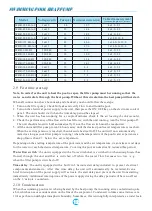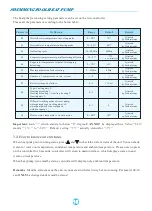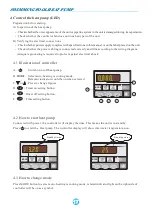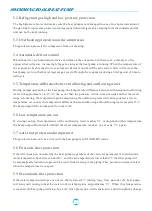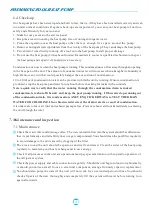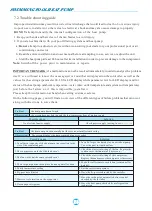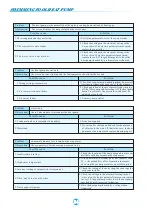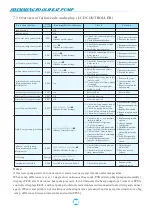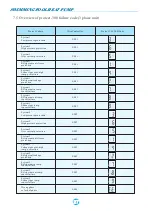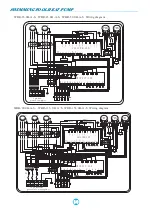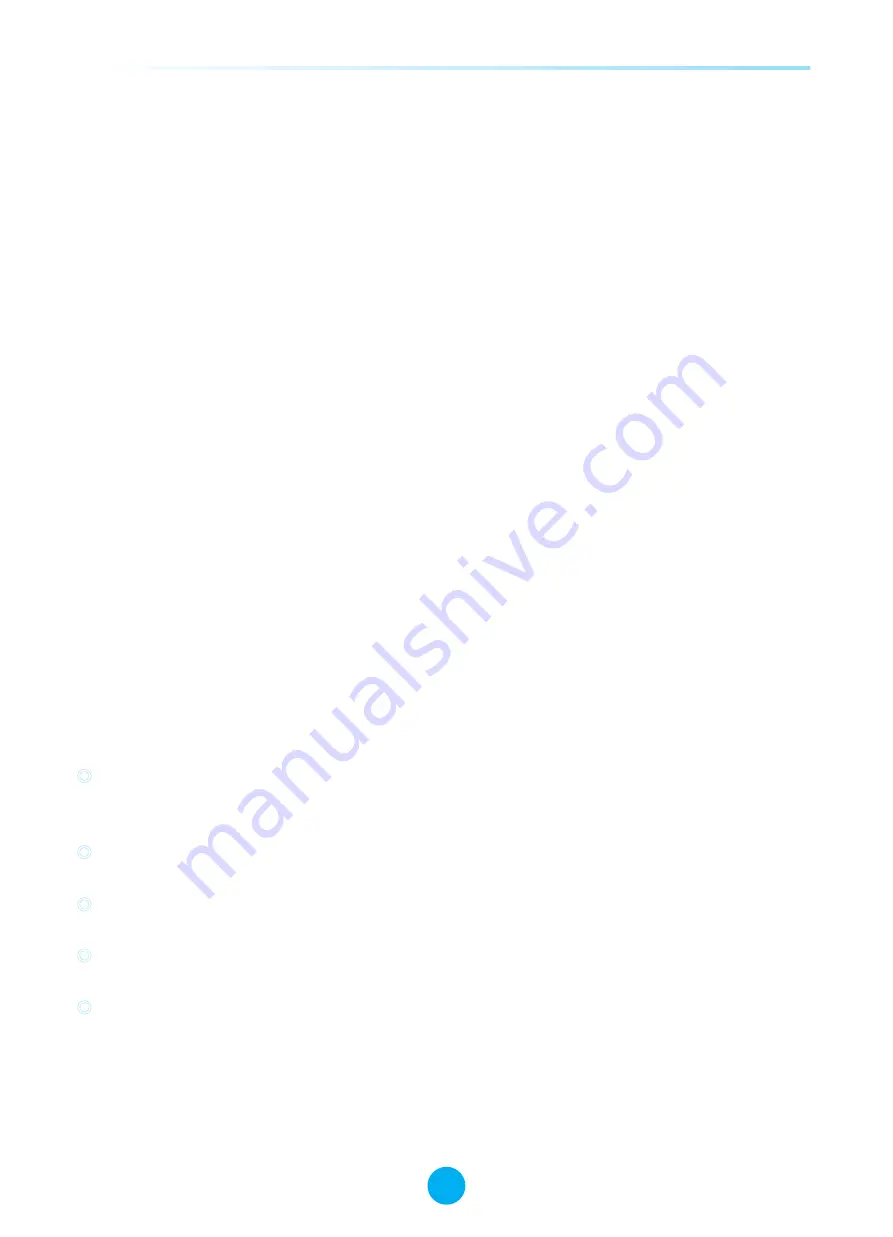
SWIMMING POOL HEAT PUMP
SWIMMING POOL HEAT PUMP
in the base pan of the unit. The amount of condensation water will increase when atmospheric humidity is
high. Remove any dirt that could possibly hamper the evacuation of condensation.
10 to 20 litres of condensation water can be produced while the unit is running. If more condensation is
produced, stop the heat pump and wait for one hour before checking for leaks in the conduits.
Note: a quick way to verify that
the
water
running
through
the
condensation
drain
is
indeed
condensation, is to shut off the unit
and
keep
the
pool
pump
running
.
If the water stops running out
of the condensation drain, it is condensation. AN EVEN QUICKER WAY is to TEST THE DRAIN
WATER FOR CHLORINE. If no chlorine is detected, the drain water is a result of condensation.
Also take care to leave air inlet and exhaust passages free. Prevent exhaust air from immediately re-entering
the unit through the inlet.
Condensation can occur when the heat pump is running. This condensation can flow away through an opening
7. Maintenance and inspection
Check the water inlet and drainage often. The water and air inflow into the system should be sufficient so
that its performance and reliability does not get compromised. You should clean the pool filter regularly
to avoid damage to the unit caused by clogging of the filter.
The area around the unit should be spacious and well ventilated. Clean the sides of the heat pump
regularly to maintain good
heat exchange and to save energy.
Check if all processes in the unit are operational and pay special attention to the operation pressure of
the refrigerant system.
Check the power supply and cable connections regularly. Should the unit begin to function
abnormally
or should you notice a smell
from
an
electrical
component, arrange fro timely repair or replacement.
You should also purge the water if the unit will not work for an extended period of time. You should
check all parts of the unit thoroughly and completely fill the system with water before turning it on
again afterwards
.
7.1 Maintenance
22
6.4 Check-up
Our heat pumps have been developed and built to last, that is, if they have been installed correctly and can
run under normal conditions. Regular check-ups are important if you want your heat pump to function
safely and efficiently for years on end.
1. Make for easy access to the service panel.
2. Keep the area surrounding the heat pump free of contingent organic waste.
3. Prune the vegetation near the heat pump so that
there
is
enough
free
space
around
the
pump.
4. Remove contingent water sprinklers from the vicinity of the heat pump. They can damage the heat pump.
5. Prevent rain from directly running off a roof onto the heat pump. Install proper drainage.
6. Do not use the heat pump if it has been flooded. Immediately contact a qualified technician to inspect
the heat pump and repair it if should prove necessary.





